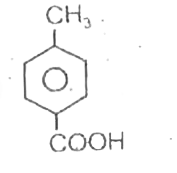A HCN−−→BH3O+−−−→2-Hydroxy propanoic acid, the compound B is :
CH3CHO
Acetaldehyde cyanohydrin
Formaldehyde cyanohydrin
Acetone
The correct Answer is:B
To solve the problem, we need to identify the compound B that is formed when HCN is added to compound A, which eventually leads to the formation of 2-hydroxypropanoic acid after hydrolysis with H₃O⁺.
1. Identify the Final Product: The final product given is 2-hydroxypropanoic acid. This compound has a hydroxyl group (-OH) on the second carbon of the propanoic acid structure.
2. Understanding the Reaction: The reaction involves adding HCN to compound A to form compound B. The addition of HCN to a carbonyl compound (like an aldehyde or ketone) typically forms a cyanohydrin.
3. Determine the Structure of Compound B: Since we know that the final product is 2-hydroxypropanoic acid, we can deduce that compound B must contain both a hydroxyl group and a cyanide group. The structure of compound B can be represented as:
- CH₃CHOHCN
This indicates that B is a cyanohydrin derived from acetaldehyde (ethanal).
4. Identify Compound A: To form compound B, we start with compound A. Since we are adding HCN to form a cyanohydrin, compound A must be acetaldehyde (CH₃CHO).
5. Final Verification: When HCN is added to acetaldehyde, it forms acetaldehyde cyanohydrin (B). Upon hydrolysis (reaction with H₃O⁺), the cyanide group is converted to a carboxylic acid, resulting in the formation of 2-hydroxypropanoic acid.
6. Conclusion: Therefore, compound B is acetaldehyde cyanohydrin.
Final Answer:
The compound B is acetaldehyde cyanohydrin (CH₃CHOHCN).
---
- CH₃CHOHCN
This indicates that B is a cyanohydrin derived from acetaldehyde (ethanal).
The compound B is acetaldehyde cyanohydrin (CH₃CHOHCN).
Topper's Solved these Questions
- ALDEHYDES, KETONES & CARBOXYLIC ACIDSBOOK - NARAYNACHAPTER - ALDEHYDES, KETONES & CARBOXYLIC ACIDSEXERCISE - EVALUATE YOURSELF -3
5 Videos
- ALDEHYDES, KETONES & CARBOXYLIC ACIDSBOOK - NARAYNACHAPTER - ALDEHYDES, KETONES & CARBOXYLIC ACIDSEXERCISE - EVALUATE YOURSELF -4
8 Videos
- ALDEHYDES, KETONES & CARBOXYLIC ACIDSBOOK - NARAYNACHAPTER - ALDEHYDES, KETONES & CARBOXYLIC ACIDSEXERCISE - EVALUATE YOURSELF -1
8 Videos
- ALCOHOLS, ETHERS, PHENOLBOOK - NARAYNACHAPTER - ALCOHOLS, ETHERS, PHENOLEXERCISE - Assertion Reaosn
10 Videos
- AMINES & DIAZO COMPOUNDSBOOK - NARAYNACHAPTER - AMINES & DIAZO COMPOUNDSEXERCISE - Subjective type Q.
13 Videos
Similar Questions
Knowledge Check
C6H5CHONH2OH−−−−→ A H2O−−→ B
What is not true for the compound B –AGives cannizaro’s reactionBActs as strong reducing agentCGives phenol on reductionDGives optical active compound with HCNSOCl2−−−→(A)KCN−−→(B)H+−−→(C ), the compound (C ) is
 A
A B
B C
C D
D
In the reaction sequence :
C6H5CHOHCN−−→[X]H2O/H⊕−−−−−→product
Product will be :AOptically inactive acidBOptically active α - hydroxy acidCRacemic mixture of two optically in active primary alcoholsDRacemic mixture of two optically active primary alcohols
Acetone HCN−−→(A)H3O+−−−→(B). In the above sequence of reaction A and B are :
View SolutionSiCl4H2O−−→(A)Heat−−→(B)Na2CO3−−−−→Heat(C),
The compound (C ) is
View SolutionKetone (A) NH2OH.HCl−−−−−−−−→ (B) H⊕−−→

The ketone (A) and compound (B), respectively, are:
Ketone (A)
I.
Compound (B)
View SolutionGiven that
CH3MgBrO2−−→XCH3MgBr−−−−−→YH3O+−−−→Z The compound Z is
View SolutionAldehyde (A) NH2OH.HCl−−−−−−−−→ (B) H⊕−−→MeNH2+HCOOH
Aldehyde (A) and compound (B), respectively are:
Aldehyde (A)
I. MeCHO II. HCHO
Compound (B)
III.
View Solution
